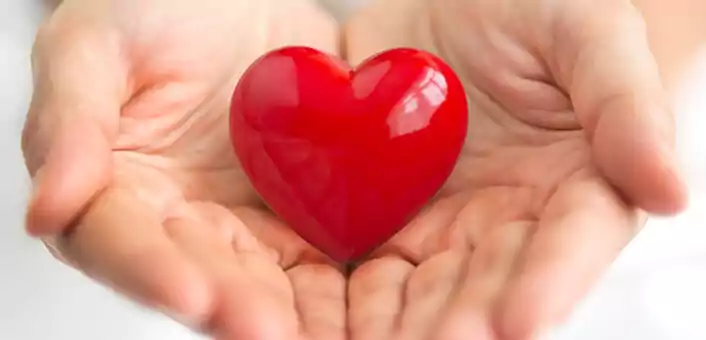
Heart
EECP Therapy: Non-Invasive Bypass Miracle?
Aug 6, 2017While being the most resilient and hard-working organ in the body, the heart is often handicapped in its efficient functioning by factors such as an unhealthy lifestyle, environment and genetics. Heart disease is the leading cause of death in men and women in the United States accounting for 610,000 deaths every year. Coronary heart disease kills more than 370,000 people in the US every year. While inserting a stent or a surgical intervention like CABG remains the only hope for patients of advanced arterial blockage, a fairly new non-invasive technique called EECP therapy is being touted as a “miracle” for millions of sufferers of heart diseases. Is EECP really that effective? Let’s find out more.
What is EECP & How Long Does Treatment Last?
EECP, or Enhanced External Counterpulsation, is a non-invasive, outpatient procedure for the treatment for angina. It involves binding cuffs to a patient’s legs and buttocks and inflating-deflating them sequentially to complement the heart’s natural beating rhythm. A continuous electrocardiogram programs the inflation and deflation cycle. A finger monitor measures the amount of oxygen in the patient’s blood and also measures the pressure waves created by these inflations and deflations.
The treatment duration of EECP therapy is usually 35 hours, divided as one hour every day, five days a week for 7 weeks. During the treatment, the patient lies comfortably on a specially-designed bed. Cuffs similar to those used to measure blood pressure are wrapped around the patient’s calves, thighs and buttocks. These cuffs then inflate and deflate at specific time intervals between heart beats. This inflation and deflation is controlled precisely by a computer-controlled ECG machine.
What Causes Angina?
Angina is the body’s signal that the heart muscles are not getting enough blood and thus oxygen. This insufficient blood supply is due to blockage and subsequent narrowing of the arteries. When the heart muscles do not get sufficient blood, they cry out for help. This leads to chest pain or pain down the left arm, between the shoulder blades or in the jaw. If the heart does not receive enough blood for a long period, its muscles become weak and are unable to pump blood for the body. Eventually, this can lead to heart failure.
How Does EECP Help?
EECP therapy works in two ways. One, it increases blood and oxygen supply to the heart muscles, and two, it decreases the heart’s workload of pumping blood. EECP is also shown to increase the production of angiogenesis factors (substances that help formation of new blood vessels from older ones). A study found that EECP acts to increase the production of nitric oxide (NO), which is a vasodilator (dilates the blood vessel) and decreases the production of vasoconstrictor endothelin (ET-1).
Which Patients Benefit The Most from EECP?
Patients with chronic stable angina (those having symptoms like chest pain, shortness of breath, fatigue and cough) can benefit from this treatment procedure. Studies have also indicated that people with severe atherosclerosis (widespread arterial blockage) and persistent angina, silent ischemia (heart problems where there is no pain), heart failure as well as those with kidney and lung failure can also benefit from this treatment.
What Does Research Say About EECP?
A joint study by Israeli and American scientists assessed the benefits and safety of EECP in heart failure patients. They found the EECP therapy safe and beneficial for functional as well as physiological improvement.
A study that assessed long-term outcomes of EECP found that in around 75% of the patients, EECP successfully relieved angina whereas it also improved quality of life in 50% of the patients, over a two-year course.
An interesting study compared patients undergoing an elective surgical intervention and those getting an EECP therapy. After one year, both groups had near-similar health characteristics. This proves that EECP is a safe treatment option for selected patients with obstructive coronary disease.
A recent review examines all the studies done so far on the efficacy of EECP in patients with coronary artery disease (CAD). It found that EECP therapy significantly increases blood flow through heart muscles and improves angina pectoris in CAD patients after EECP therapy.
What Type Of Patients Aren’t Fit For EECP Therapy?
Patients with the following conditions aren’t fit for EECP therapy:
- Arrhythmias (irregular heartbeats) that interfere with machine triggering
- Bleeding disorders (due to problems with the blood coagulation system)
- Thrombophlebitis (inflammation of vein due to blood clot)
- Vaso-occlusive disease (a severe, often painful, complication of sickle cell anemia)
- Aortic aneurysm (where aorta is enlarged or dilated to 1.5 times its original diameter)
Also, the therapy is not suited for pregnant women.
Precautions to be Followed Prior to EECP Therapy
Blood pressure higher than 180/110 mmHg should first be controlled before starting EECP therapy. Heart rate greater than 120 bpm should be controlled first. Patients who have a faulty heart valve need to be carefully monitored throughout the course of the treatment. Certain valve defects may make a patient unsuitable for EECP therapy.
Parting words
EECP provides a safe, non-invasive alternative to the more risk-laden surgical procedures. EECP is a promising therapy but not a miracle people expect it to be. Although it shows excellent results in more than 80% of the patients who use it, it is not suitable for every heart patient. However, it can be used as an effective treatment for coronary artery disease in a majority of patients with a stable condition.
References:
https://www.cdc.gov/heartdisease/facts.htm
http://citeseerx.ist.psu.edu/viewdoc/download?doi=10.1.1.664.5614&rep=rep1&type=pdf
https://www.researchgate.net/profile/Marina_Leitman/publication/6673335_The_benefits_and_safety_of_external_counterpulsation_in_symptomatic_heart_failure/links/00463533cf7c6b9591000000.pdf
http://www.sciencedirect.com/science/article/pii/S0002914903015911
http://www.sciencedirect.com/science/article/pii/S0002914902023019
http://journals.plos.org/plosone/article?id=10.1371/journal.pone.0151822#sec013





